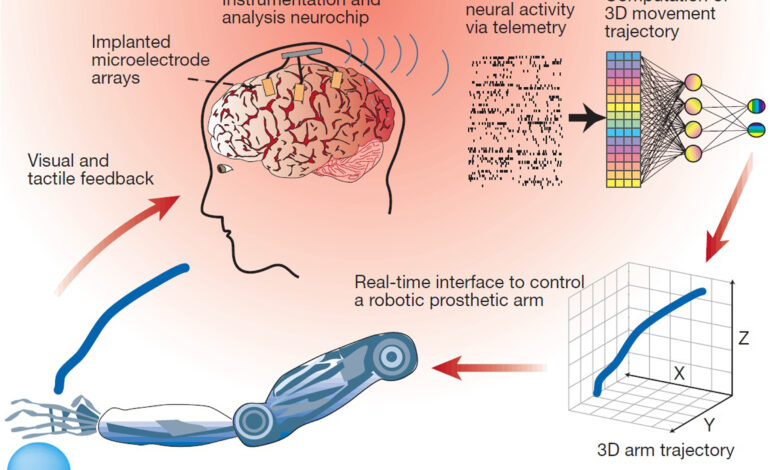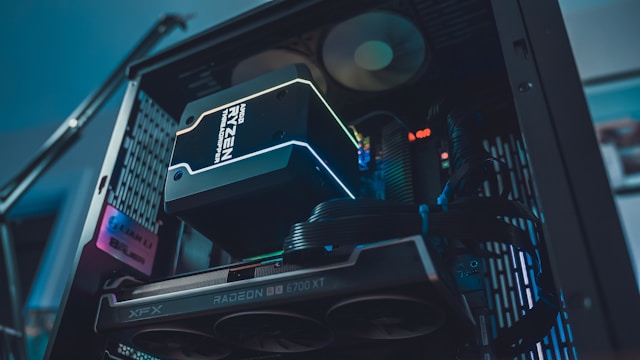Brain-Computer Interfaces: The Future of Interaction

The Future of Human-Computer Interaction: Brain-Computer Interfaces and the Next Evolution of Input
For decades, we’ve interacted with computers through intermediaries – keyboards, mice, touchscreens, voice commands. These methods are effective, but they’re fundamentally indirect. Imagine a world where you could control your computer, not with your hands or voice, but directly with your thoughts. This isn’t science fiction anymore; it’s the rapidly developing field of Brain-Computer Interfaces (BCIs), and it represents potentially the next monumental leap in how we interact with technology.
What are Brain-Computer Interfaces?
At their core, BCIs are systems that allow communication between a human brain and an external device – typically a computer. They bypass traditional neuromuscular pathways entirely, translating brain activity into commands that can control machines. The concept isn’t new; early research started in the 1960s, initially focused on helping individuals with severe paralysis regain some level of control over their environment.
There are two primary categories of BCIs: Invasive and Non-Invasive. Understanding the difference is crucial to grasping the current state and future potential of this technology.
Invasive Brain-Computer Interfaces
Invasive BCIs involve surgically implanting electrodes directly into the brain tissue. This offers several advantages: higher signal quality, more precise targeting of specific brain regions, and the ability to record from individual neurons or small groups of neurons. These interfaces provide a much richer dataset for decoding complex commands.
Early invasive BCIs focused on restoring basic functions like movement in paralyzed individuals. For example, researchers have successfully enabled patients with spinal cord injuries to control prosthetic limbs, robotic arms, and even wheelchairs using their thoughts. More recent advancements are pushing the boundaries further. Scientists are exploring the use of invasive BCIs for:

- Restoring Sensory Function: Researchers are working on systems that can stimulate specific areas of the brain to restore a sense of touch or vision in individuals who have lost these abilities.
- Treating Neurological Disorders: Deep Brain Stimulation (DBS), already used for Parkinson’s disease and other conditions, is essentially a form of BCI. Future invasive BCIs could offer more targeted therapies for neurological disorders like epilepsy, depression, and obsessive-compulsive disorder.
- Cognitive Enhancement: While ethically complex and still in early research stages, some scientists are exploring the possibility of using invasive BCIs to enhance cognitive abilities such as memory or attention. This area is fraught with ethical considerations and requires careful scrutiny.
Of course, invasive BCIs also come with significant challenges. Surgical risks, biocompatibility issues (the body’s immune response to implanted materials), the potential for brain damage, and long-term electrode degradation are all hurdles that need to be addressed.
Non-Invasive Brain-Computer Interfaces
Non-invasive BCIs avoid surgery altogether. They use external sensors placed on the scalp – typically electroencephalography (EEG) electrodes – to detect electrical activity in the brain. While less precise than invasive methods, non-invasive BCIs are significantly safer and more accessible.
EEG is the most common technology used in non-invasive BCIs because it’s relatively inexpensive, portable, and easy to set up. However, EEG signals are often noisy and affected by factors like muscle movements or environmental interference. Researchers are continuously developing algorithms to filter out this noise and improve the accuracy of signal decoding.
Current applications of non-invasive BCIs include:
- Assistive Technology: Allowing individuals with paralysis to control computers, wheelchairs, or communication devices using their thoughts.
- Gaming and Entertainment: Controlling video games, creating music, or navigating virtual environments with brain activity. Several companies are exploring these applications, making BCI gaming a burgeoning market.
- Neurofeedback: Training individuals to consciously regulate their brain activity patterns to improve focus, reduce anxiety, or manage pain.
- Brain Monitoring & Research: Studying cognitive processes and neurological disorders by observing brain activity in real-time.
The future of non-invasive BCIs hinges on advancements in sensor technology, signal processing algorithms, and machine learning techniques to improve accuracy and robustness. Dry electrodes that don’t require conductive gels are also a key area of development to enhance usability.
Hybrid Approaches: Combining the Best of Both Worlds
The most promising future for BCIs likely lies in hybrid approaches that combine the strengths of both invasive and non-invasive methods. For example, an individual might use an invasive BCI implanted in a specific area of the brain to control a prosthetic limb while simultaneously using a non-invasive EEG system to monitor overall cognitive state and adapt the prosthetic’s behavior accordingly.
Ethical and Societal Considerations
As BCIs become more sophisticated, they raise profound ethical and societal questions. Data privacy is a major concern: What happens to the vast amounts of brain data generated by these devices? Who has access to it?
Security risks are also paramount. Hackers could potentially gain control of BCI-controlled devices or even manipulate an individual’s thoughts (though this remains in the realm of science fiction for now, preventative measures must be considered).
Furthermore, the potential for cognitive enhancement raises questions about fairness and access. Could BCIs create a “cognitive divide,” where those who can afford them gain an unfair advantage?
The development of regulations and ethical guidelines is crucial to ensure that BCIs are used responsibly and benefit society as a whole.
The Future Landscape
The field of Brain-Computer Interfaces is evolving at an astonishing pace. We’re likely to see:
- Increased Accuracy & Reliability: Continuous improvements in sensor technology, algorithms, and machine learning will lead to more accurate and reliable BCIs.
- Wider Applications: Beyond assistive technologies, we’ll see BCIs integrated into everyday life – controlling smart homes, cars, and other devices with our thoughts.
- Neuro-Prosthetics: Advanced prosthetic limbs that are seamlessly integrated with the nervous system and controlled by thought will become a reality.
- Brain-to-Brain Communication: While still highly speculative, research into direct brain-to-brain communication is underway, potentially opening up new avenues for collaboration and understanding.
The journey from early laboratory experiments to widespread adoption of BCIs will undoubtedly be long and challenging. However, the potential benefits – restoring function for individuals with disabilities, enhancing human capabilities, and revolutionizing how we interact with technology – are too significant to ignore. The future of human-computer interaction is undeniably intertwined with the evolution of Brain-Computer Interfaces.



